Plant Evolution: Little Red Dots. What do they mean? [Science][Gardening]
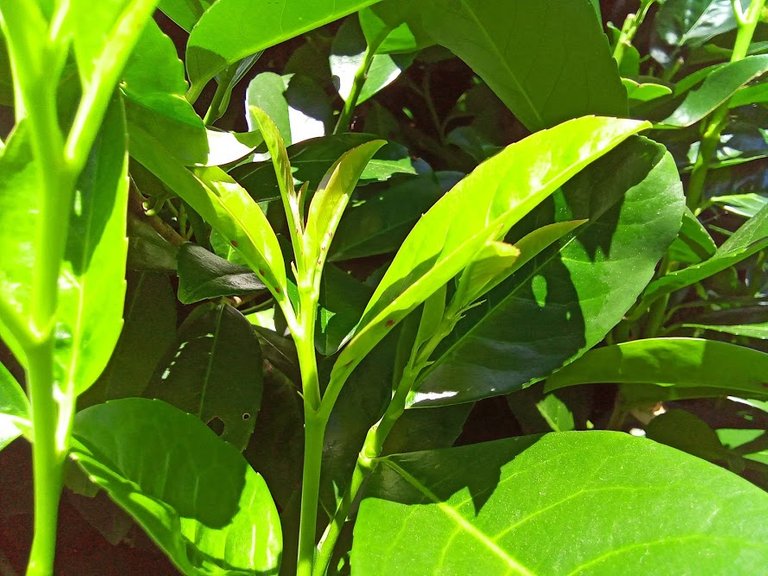
Recently, I went out exploring my garden, and I noticed something strange.
Little red dots on the back of nearly every new leaf of the laurel hedge.
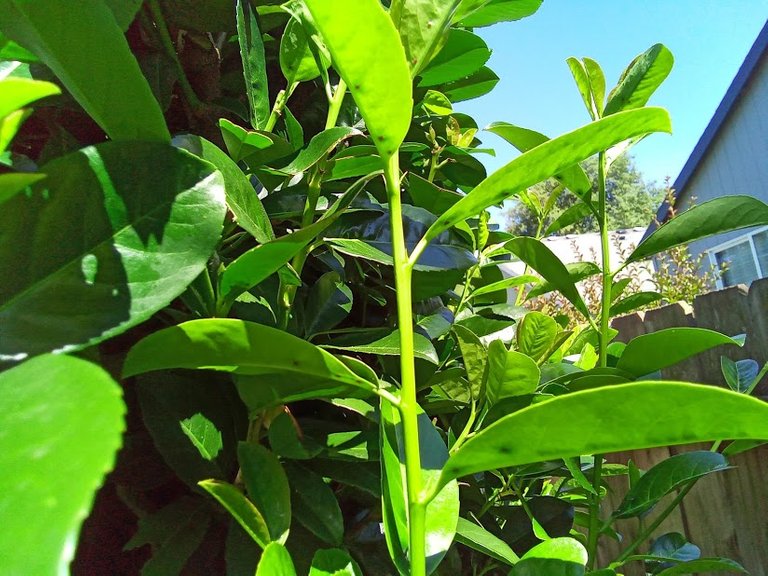
At first I thought it must be a plant disease. Maybe an insect had laid eggs.
On older leaves the dots looked more like faded black dots.
Nearly every leaf had these same red bulbous dots on the underside of the leaves alternating in about the exact same locations.
So I did some research and learned what these are.
Extrafloral Nectaries

Extrafloral Nectaries (EFN) are not flowers. They are described as a gland, connected to the inner vascular system of the plant. They have a very specific evolutionary purpose that helps make plants super-powered!
The EFN secretes sugary nectar. The plant saves all the sugar it produces and pushes it out of these little EFN nectar factories to help feed pollinators. You might find bees, wasps, birds, ladybugs, and ants all feeding on the nectar of these EFN's where ever they can be found.
Purpose of EFN's
Young leaves of plants are often full of sugar, necessary for growth production. This makes them extremely susceptible to insect damage, like caterpillars and aphids. Even larger herbivore animals will enjoy the young leaves full of juicy sugar as a nutritional snack.
Flowers and EFN's help the plant to expel excess sugars, which causes the leaf to become bitter as it matures.
Additionally, by attracting pollinators, it helps protect the plant from harmful pests. Especially ants, they love feeding on sugar sources. They will team up and help remove any caterpillars that might attempt to devour the leaves, because they rely on the leaves to produce the sugary EFN's.
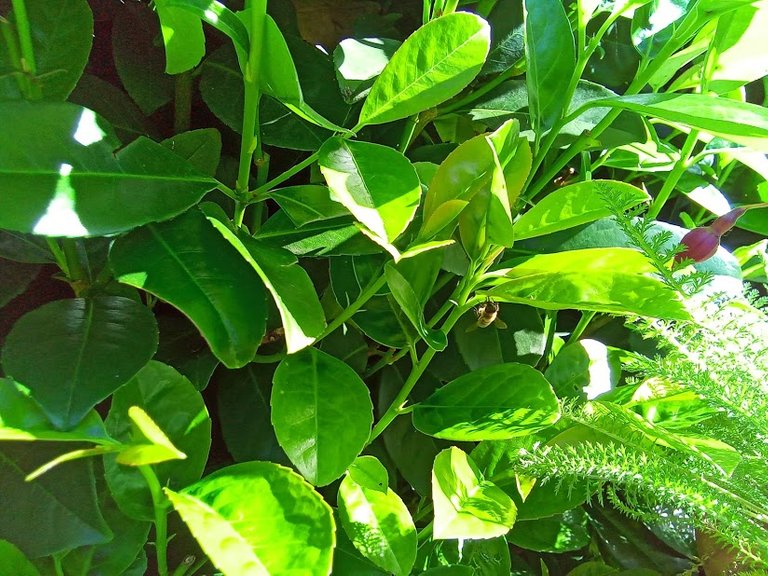
The thing I found most amazing was the number of bees that seemed to be flying from leaf to leaf to gather up nectar from these little red dots. I was also finding many ladybugs and ants busily crawling from leaf to leaf.
Not only are these Extrafloral Nectaries feeding the bees on a hot day, but the large leaves are also helping to offer shade to help cool down the insects while they feed.
I imagine bees would much rather crawl under the cool shade of a hedge leaf during the hottest hours of the day, than fly through the scalding sun in search of flowers.
Observations
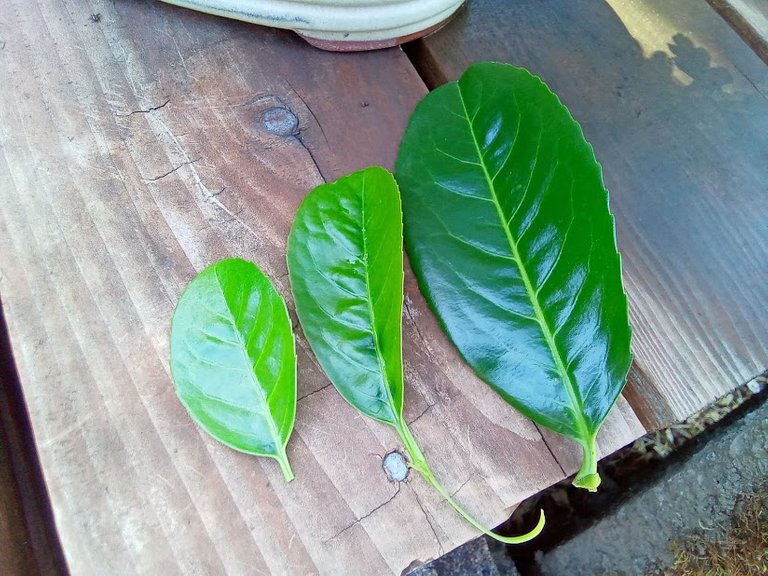
On three leaves I gathered, I noticed another oddity I could not ignore. In my googling, I cold not find any scientific explanation for these observations.
On the youngest leaf, the color is very bright green, while on the oldest leaf, the color is very dark green. That makes sense, however...
... On the intermediate leaves, I can see the chlorophyll greening the leaf immediately around the tissue closest to the where the red dots are located on the underside.
Are these same green sugars being sent to the EFN's also causing the greening of the leaf?
Is there perhaps a symbiotic relationship between the pollinating insects visiting the leaves and the greening of the leaf itself? Are the insects perhaps adding trace amounts of fertilizer to the leaves, or is it in fact the vascular system of the leaf sending nutrients to the leaf through these EFN's?
Evidence of Greening
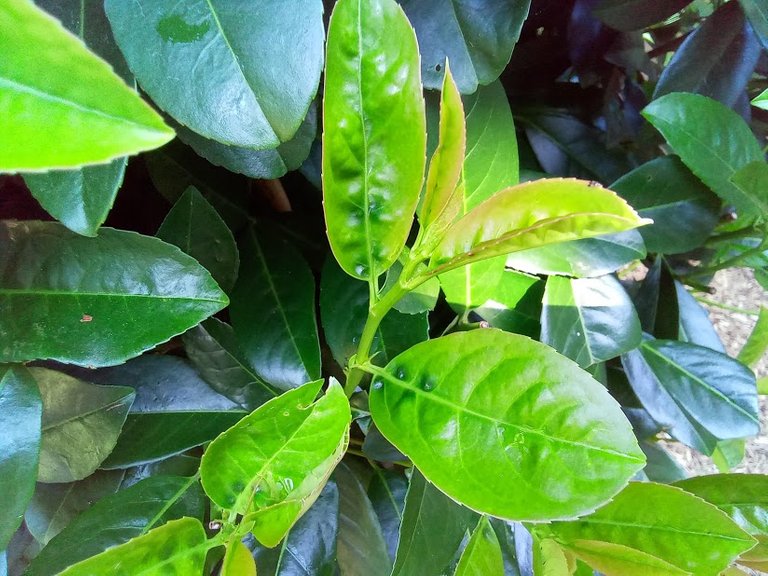
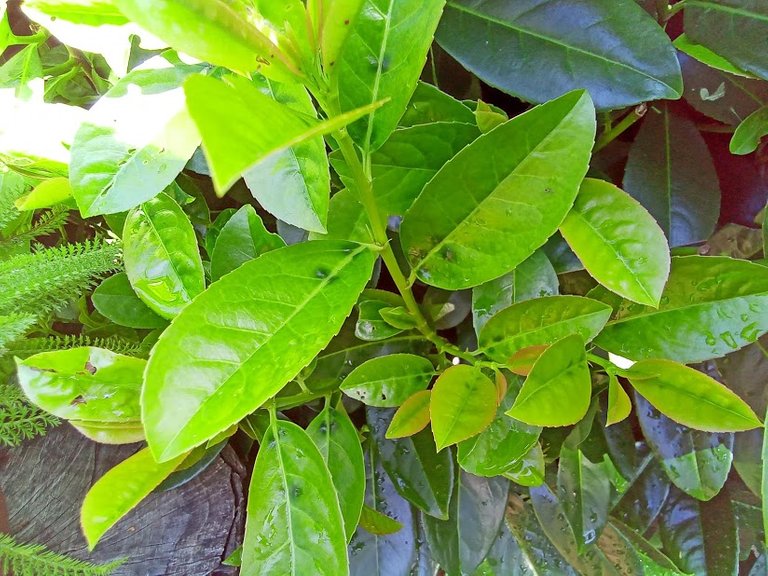
Many plants are able to form these evolutionary super-powered EFN's, so be sure to look for them on your trees and shrubs after new leaves emerge. They sometimes grow at the base of the leaf on the stems.
Cherry trees, and many other trees in the Prunus family have this unique trait. Even many annuals, such as Sunflowers develop them. Native plants often survive because they have this trait as well.
Conclusion
Without these Extrafloral Nectaries, they would be succeptable to the same pests and diseases of other less evolved plants. It is this ability that allows them to survive under difficult conditions, because the insects are acting as nature's gardeners to help keep the plants alive.
To attract pollinators to the garden, consider planting a hedge instead of a field of flowers. It will likely provide just as much, if not, more nectar and shade. This benefits a wide spectrum of life and fertility to the surrounding ecosystem.
This is my first post in #StemSocial. Let me know if this is a good home for posts like this one. I always welcome feedback and questions in the comments below.
Photographs are all original images shots by @creativetruth.
#homesteading #hedge #laurel #prunus #cherry-tree #Extrafloral-Nectaries #nectar #glands #red-dots #insects #bees #bee

This is really interesting! I'd not heard of these before. Now I will be looking for them on my plants...
As a Botanist myself, I find this quite interesting as I have never heard of EFNs before now. The extra green coloration observed around the EFNs might be due to increased metabolic activities of the tissues surrounding them. However, it would be interesting to see a more plausible opinion on it.
Stemsocial is actually a home for this kind of content. You just need to cite some of the resources consulted in the build-up to the article. Good job nevertheless.
Thanks for your contribution to the STEMsocial community. Feel free to join us on discord to get to know the rest of us!
Please consider supporting our funding proposal, approving our witness (@stem.witness) or delegating to the @stemsocial account (for some ROI).
Please consider using the STEMsocial app app and including @stemsocial as a beneficiary to get a stronger support.
Greetings @Verdadcreativa what an interesting article I have had the opportunity to read, I note that you are very curious with your crops and that is the key to success to get the best care and production if it came to the case, how great is nature, those extra-floral nectars like you indicas are a mechanism that the plant uses to generate an appropriate environment, stimulating the presence of functional organisms such as pollinators to ensure their offspring and natural enemies for pest insect control, This is all a wonder, so we need to know the ecosystem before we try to manipulate it our way.
On the other hand, regarding the leaves I consider that they do not present any deficiency according to what I observe in the photograph, I think it is the metabolism of the plant that exerts this type of changes, since you are comparing the green color of young leaf with a developed one. Although sometimes the dark green color is due to an excess of nitrogen, because it is an element that enhances the photosynthetic process and the growth of the plant, phosphorus deficiency can also generate dark green leaves but is easy to detect because they have some red spots, and also according to some physiological authors some substances that together with chlorophyll generate a dark green color to protect the leaves from the intensity of the sun’s rays.
Friend you have generated in your publication a series of edge that can become future articles for this great community, I congratulate you and we continue in communication, take into account to cite some authors that serve as reference.
Yes, thank you for the comment. I plan to update my article with sources as others recommend. This is my first scientific type of article. Normally I share my gardening experiences as learning opportunities.
Looks like you translated my username to Spanish. 🤠🏜️🌶️
Checked my laurel and found a few extrafloral nectaries too.
Hola @creativetruth... Hoy es un Día muy especial para todos los niños…
Hello @creativetruth... Today is a very special day for all children...
Feliz Día del Niño… Por favor visita este enlace, Gracias.
Happy Children's Day ... Please visit this link, Thank you.